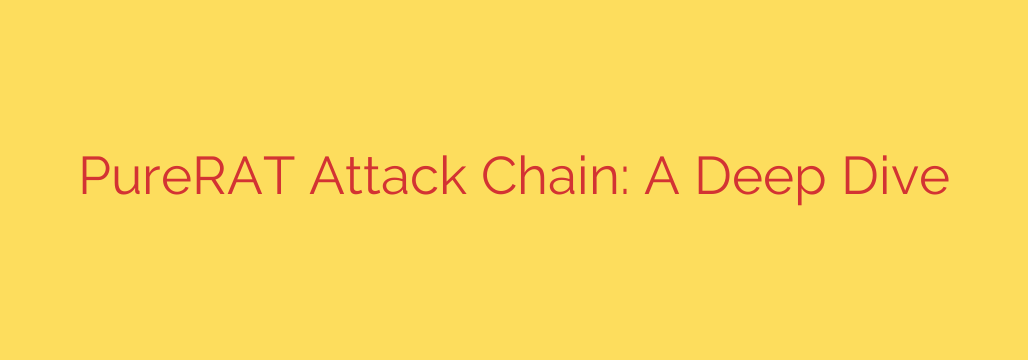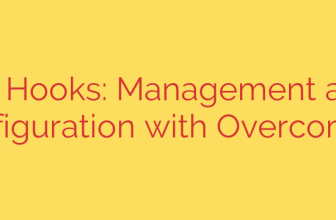
PureRAT Attack Chain Explained: How a Simple File Leads to Full System Control
In the sophisticated world of cyber threats, Remote Access Trojans (RATs) remain one of the most dangerous tools in an attacker’s arsenal. These malicious programs grant adversaries complete control over a compromised system, turning a private computer into an open book. One such threat making waves is PureRAT, a potent malware that employs a multi-stage attack chain to infiltrate systems and evade detection.
Understanding how PureRAT operates, from the initial lure to its final payload, is crucial for strengthening your defenses. This deep dive unpacks its entire attack chain, revealing the clever techniques used to gain and maintain control.
Stage 1: The Lure – Phishing and Malicious LNK Files
Like many cyber attacks, the PureRAT infection process often begins with a carefully crafted phishing email. The email is designed to create a sense of urgency or curiosity, compelling the recipient to open an attachment. However, instead of a typical document like a PDF or Word file, attackers often use a malicious shortcut file (a .LNK file) disguised as a legitimate document.
This is a clever social engineering trick. Most users see a familiar icon and filename and don’t think twice before clicking. They are unaware that a simple shortcut file can execute powerful commands to kickstart a malware infection.
Stage 2: Execution – Unleashing PowerShell
Once the user clicks the deceptive .LNK file, the attack chain is set in motion. The shortcut file doesn’t open a document; instead, it executes a hidden command. This command typically launches PowerShell, a powerful command-line tool built into Windows.
The PowerShell script is often heavily obfuscated, meaning its code is intentionally scrambled to make it unreadable to both security analysts and antivirus software. This script acts as a “dropper,” with its primary job being to download the next stage of the malware from a remote server controlled by the attacker. By using a legitimate Windows tool like PowerShell, the malware can operate “off the land,” making its initial activity much harder to detect.
Stage 3: Establishing a Foothold – Persistence and C2 Communication
After the malicious payload is downloaded, the malware’s next priority is to ensure it can survive a system reboot. This is known as establishing persistence. PureRAT often achieves this by creating a scheduled task or modifying Windows Registry keys, forcing the operating system to automatically run the malware every time it starts up.
With persistence secured, the RAT establishes a connection with a Command and Control (C2) server. This server is the attacker’s headquarters, allowing them to send commands to the infected machine and receive stolen data. The communication is often encrypted and designed to blend in with normal network traffic, further evading detection by firewalls and security tools.
Stage 4: The Payload – What PureRAT Can Do
Once fully installed and connected to its C2 server, PureRAT gives the attacker a wide range of surveillance and control capabilities. As a full-featured Remote Access Trojan, it can perform numerous malicious actions, including:
- Keystroke logging to capture passwords, private messages, and financial information.
- File system manipulation, allowing the attacker to browse, upload, download, and delete any file on the system.
- Screen capturing and video recording to spy on the user’s activity in real-time.
- Accessing the webcam and microphone to covertly monitor the victim’s surroundings.
- Executing remote commands, effectively giving the attacker a full command-line interface to the compromised machine.
- Stealing sensitive information like browser cookies, saved credentials, and system data.
How to Defend Against PureRAT and Similar Threats
Protecting against multi-stage attacks like the one used by PureRAT requires a layered security approach. No single solution is enough. Here are actionable steps you can take to bolster your defenses:
Enhance Email Security: Use an advanced email filtering solution that can scan for malicious links and attachments. Train users to be suspicious of unsolicited emails, especially those that create a false sense of urgency.
Configure System Policies: Show file extensions by default in Windows. This makes it easier to spot a fake document, such as
Invoice.pdf.lnk. Consider implementing policies to restrict the execution of PowerShell scripts for standard users.Implement Advanced Endpoint Protection: Traditional antivirus software may miss obfuscated scripts. An Endpoint Detection and Response (EDR) or Extended Detection and Response (XDR) solution provides greater visibility into system processes and can detect suspicious behavior, like PowerShell downloading a file from an unknown source.
Maintain a Strict Patching Cadence: Keep your operating system, browser, and all software updated. Attackers often exploit known vulnerabilities to escalate privileges once they have an initial foothold.
Educate and Train Users: The human element is often the weakest link. Regular cybersecurity awareness training can teach users to recognize the signs of a phishing attack and understand the danger of clicking on unknown attachments or links.
By understanding the step-by-step process of the PureRAT attack chain, organizations and individuals can better appreciate the threat and implement the robust, multi-layered security controls needed to stay protected.
Source: https://www.bleepingcomputer.com/news/security/from-infostealer-to-full-rat-dissecting-the-purerat-attack-chain/








